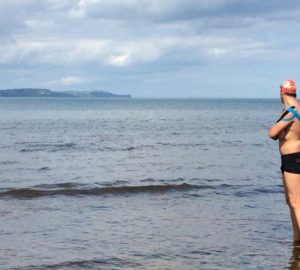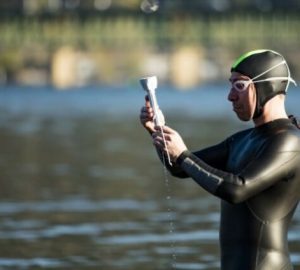How to return to form
No matter how well we prepare, sometimes injuries happen and sometimes they occur outside of our sport – I once tore my bicep tendon arm wrestling a Brazilian rodeo rider in Prague. In this article we look at whether you should stop training completely if you are injured and how to deal with the mental aspects of returning from an injury.
Do I have to stop training completely?
The first and most important thing to do if you experience pain while swimming is to stop swimming. Sounds obvious. But how many of you have tried to ‘swim through’ pain in the hope that it will go away? Dealing with pain early is a good preventative measure for injury – early intervention should ensure that the problem doesn’t get any worse. Get a professional diagnosis, preferably from a specialist with some knowledge of swimming. Don’t expect a miracle cure – the body is a complicated beast.
But an injury break from training can be turned into a win. Often intense training, fatigue or poor technique can cause injury. An enforced rest allows recovery and adaptation. There are many among us, myself included, who have come back better than ever following a short respite for an injury. An injury is not the end of the world. Like anything in life, it is important to stay focused on the positives. Optimism breeds healthy outcomes.
Does an injury mean your training has to stop completely? No, it does not. It is possible to maintain a level of fitness and improve technique while injured by adjusting the way you train.
Kicking
It’s the vital but often overlooked support act to freestyle swimming. We need it for balance, rotation, body position and some propulsion. But often we neglect it. A kick done well is a great asset and helps to reduce the drag component in the swim performance equation. A shoulder or elbow injury can give you an ideal couple of weeks to develop your kick.
Stretching
Many swimmers know what good technique entails, yet their limited range of motion prevents them from achieving their full potential. An injury is a great opportunity to spend more time incorporating stretching into your training regime to make you both stronger and more supple. As well as rehababilitation stretches prescribed by your physiotherapist, there are plenty of dryland exercises that will help improve your swimming.
When was the last time you stretched your feet for increased range of motion during the kick? Or worked on ankle mobility to allow you to point your toes while swimming to reduce drag and increase propulsion? Time spent out of the water can also be used to strengthen your core so you can maintain stability and position in the water. Simple exercises such as the plank, as long as this does not aggravate your injury, will help your core stability. Or practise good kicking technique on dry land – lie on your front on a mat with your arms stretched forward and practise kicking from the glutes rather than the quads. Kick small and keep streamlined, ensuring you are keeping your legs straight and not kicking from the knees.
Single-arm stroke drills
Just a few single-arm stroke drills on the non-injured arm can help you feel like you are staying in touch with the water. Single-arm drills can be carried out with the non-stroking arm held in front of you or at your side and are used to work on your catch, pull and recovery. Single-arm drills with your arm by your side will also work your core and improve rotation, body position and general stroke dynamics. What you learn about your stroke and technique can be applied to both arms post injury.
Coming back from injury
Unfortunately it isn’t possible to ‘bank’ many aspects of our training. This means when we return to swimming we are likely to find we have lost some form or ‘feel’ for the water. The longer you’ve been out of the water the worse this situation may feel on your return. So how do you deal with the mental challenges of returning to swimming?
Have a plan
What type of training were you doing pre-injury? Have you reflected on how that may have contributed to your injury? What have you changed? Don’t come back from injury and repeat mistakes only to end up injured again. Many athletes get injured. Smart athletes don’t make mistakes more than once.
Listen to your body
Don’t push too hard too early. Allow your body a chance to get back into training mode – going too hard too soon could mean another injury. Getting back into training mode doesn’t take long but early patience is required.
Be mentally prepared
It can be tough looking at the pace clock and seeing you aren’t as fast as you were before injury, or hearing about your friends’ long swims that you know that you would not be fit enough to complete. Acknowledge that you may not feel great to begin with. This is perfectly normal and OK. If you are prepared for this it won’t come as a surprise.
Positive attitude
You are back in the water because you have recovered from the injury. Be positive. Act positive. You have the ability to come back better and smarter than ever before. It’s an opportunity not to be missed.
A training log not only measures your success but helps you create a balanced training regime. Keeping a record of your training can also help ensure history doesn’t repeat itself if you do get injured. Record dates, main set times and repeats, total distances and other variables such as stroke count for a given distance. Also record any niggles or pain and their cause.
The best way to deal with injuries is to avoid them. That is not always possible. The next best way to deal with injury is to be pro-active. Educate yourself. Seek expert help. Deal with and treat the injury. Remain active if you can, it will help you remain optimistic and keep that all-important positive outlook.
Image © Solo Sport








